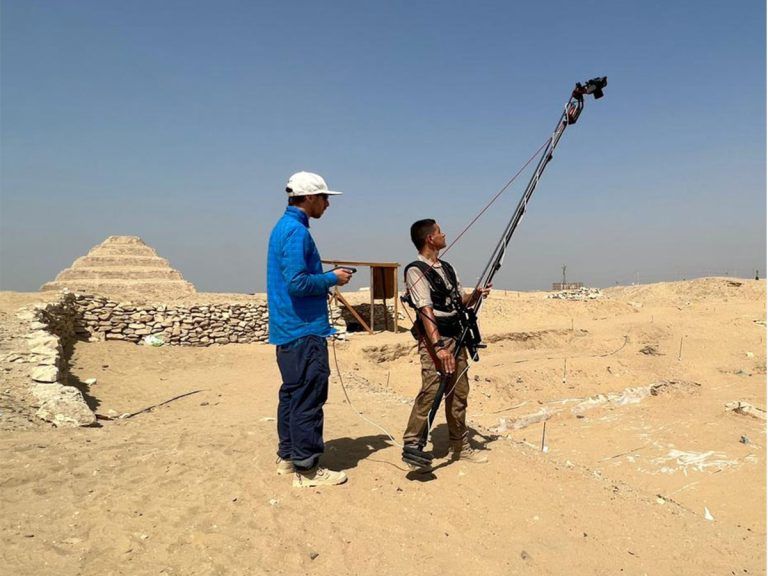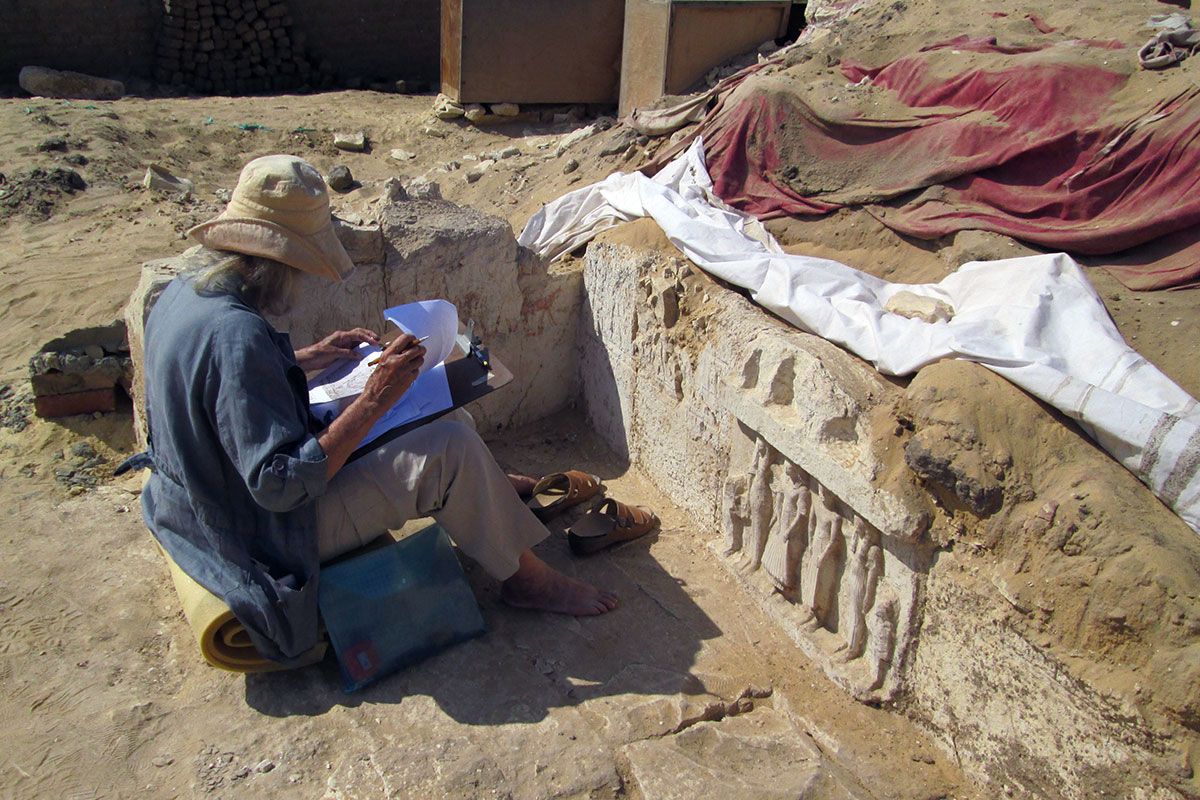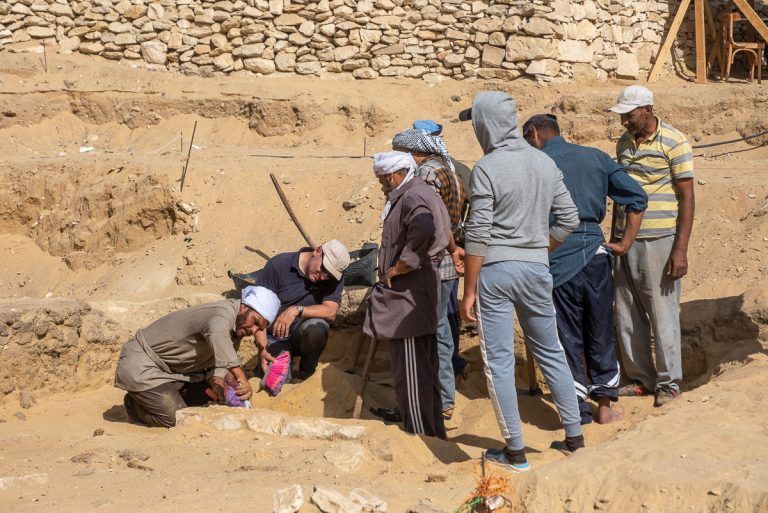Collaboration with Museo Egizio, Turin
The National Museum of Antiquities has been working on an excavation project in Saqqara since 1975, carrying out research and excavations for a few weeks each year. In 2015, the Museo Egizio from Turin joined the project as an official partner. The field direction is conducted by The National Museum of Antiquities in Leiden and Dr. Christian Greco, director of the Museo Egizio, Turin.
Excavations 2023
In 2023, the archaeological investigation will take place from 19 February to 23 March.
- For the progress of the excavation in 2023, for the results of the excavation in 2022 and 2019, and other news, see the news items at the bottom of this page.
Saqqara
The modern village of Saqqara lies about thirty kilometres south of Cairo. From Saqqara you can see the famous step pyramid built by pharaoh Djoser (c. 2650 BC) on the horizon. For thousands of years, the desert near the village was used as the cemetery for the nearby city of Memphis. For centuries, many high-ranking officials and members of the royal family were buried at the cemetery. Egypt’s Ministry of Tourism and Antiquities gave the museum permission to conduct research in a part of the cemetery, dating from the reign of the pharaohs Tutankhamun, Ay, Horemheb, and Ramesses I and II (1334-1212 BC). The grounds were also used for burials in later periods of Egyptian history.
Burial chambers
Most of the tombs that the museum has found in Saqqara are shaped as small temples, with an underground burial vault or a complex of different burial chambers. The walls of the tomb chapels are decorated with sculpted reliefs and colourful wall paintings. The subterranean burial chambers can be reached through deep shafts.
The research team
The international research team consists of scientific experts and staff attached to the two museums and the Egyptian antiquities service, as well as Egyptian colleagues who do the archaeological work of removing the layers of sand. The team registers all finds, traces, and other on-site discoveries. They study and analyse the results at length afterwards, eventually publishing their reports in scientific journals.
Partners excavation project
The archaeological research project in Saqqara was launched in 1975. Up until 1998, the museum cooperated with the Egypt Exploration Society in London. The University of Leiden became involved in the project in 1999, followed by the Museo Archeologico in Bologna in 2011. In 2015 the Museo Egizio of Turin joined in as the third partner. The project is co-financed by the Netherlands Organization for Scientific Research (NWO) and The Amarna Foundation.
Friends of Saqqara
You can also follow the progress being made in the Saqqara dig on the website of the Friends of Saqqara and support this project by joining the Friends of Saqqara or by donating to the museum directly.
Learn more about our own collection
The original aim of the research project was to learn more about the background and history of the objects from Saqqara in the museum’s collection. Many of objects from Saqqara, such as reliefs and stelae, have become dispersed among museums all over the world, including the National Museum of Antiquities. Therefore, the museum has excavated at Saqqara in the immediate vicinity of sites where such objects were found in the nineteenth century. The excavations have informed researchers about the tombs in which these objects were found. For instance, they now know more about where and how these objects were used. In addition, tombs once believed to have been lost have been rediscovered.
Wider purpose
The current research project tries to understand the wider Saqqara area and its long history, from the 2nd Dynasty (c. 2700 BC) to the Late Antique period, c. 7th century AD. Research results are published in scientific books and articles. Nowadays, the objects excavated by the museum are kept in Egyptian storerooms and museums. For example, the double statue of the high priest Meryneith and his wife Anuy, excavated in 2001, is now displayed in the Egyptian Museum in Cairo.

Week 3, 2022: Survey of the excavation area

Week 5, 2022: At work on site copying the family group (photo: Barbara Aston)

Week 4, 2022: Assam Sayed, Paolo, Magdi Rubi, Rafa’at Eid, Mohammed Sayed and other workmen looking at one of the upright limestone slabs marking the walls of the western chapels of the tomb (Photo: Nicola Dell’Aquila)

Week 7, 2022: Antar Shadouf showing us photos of his family members who came from Quft and worked with archaeological missions in Saqqara (photo: Servaas Neijens)